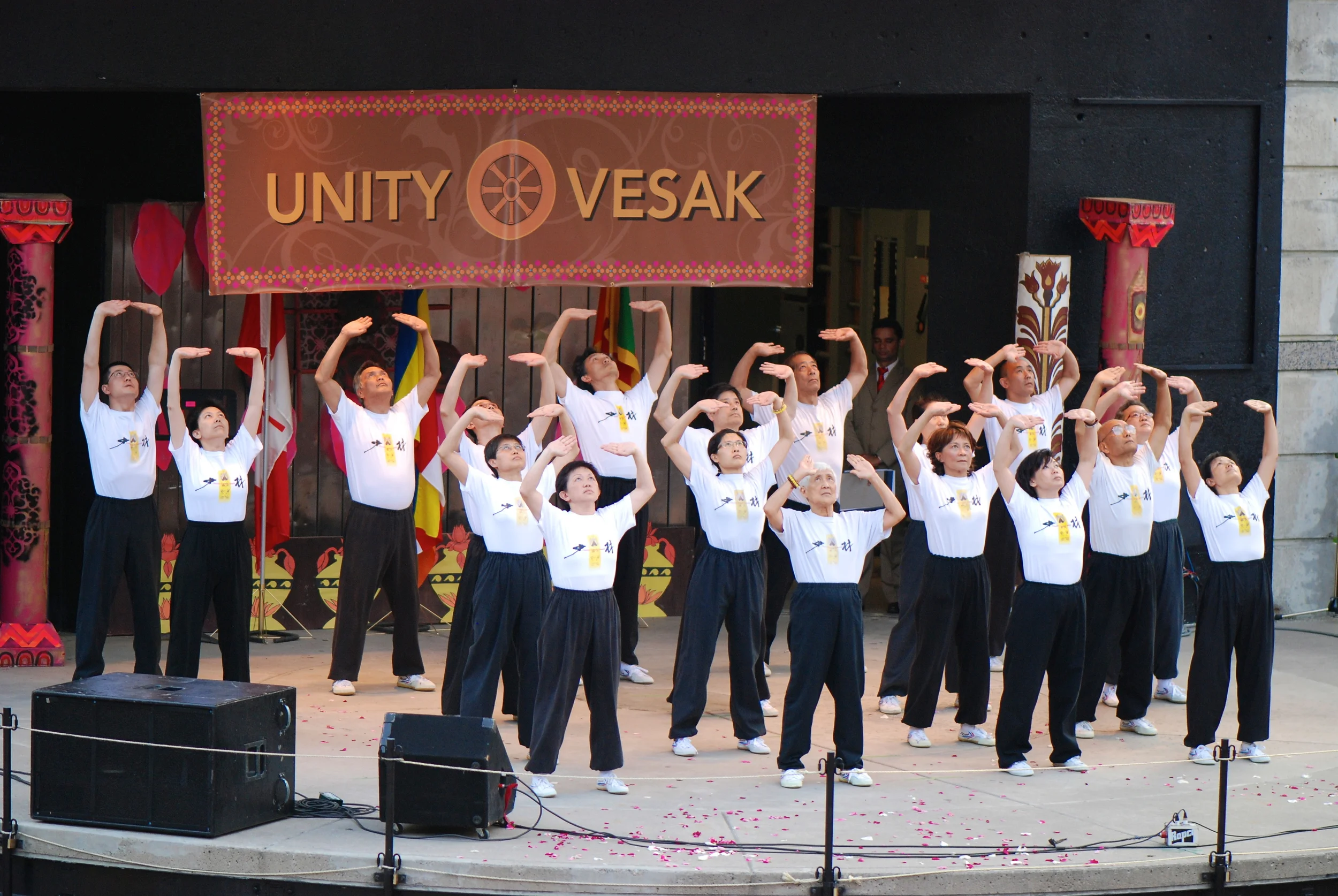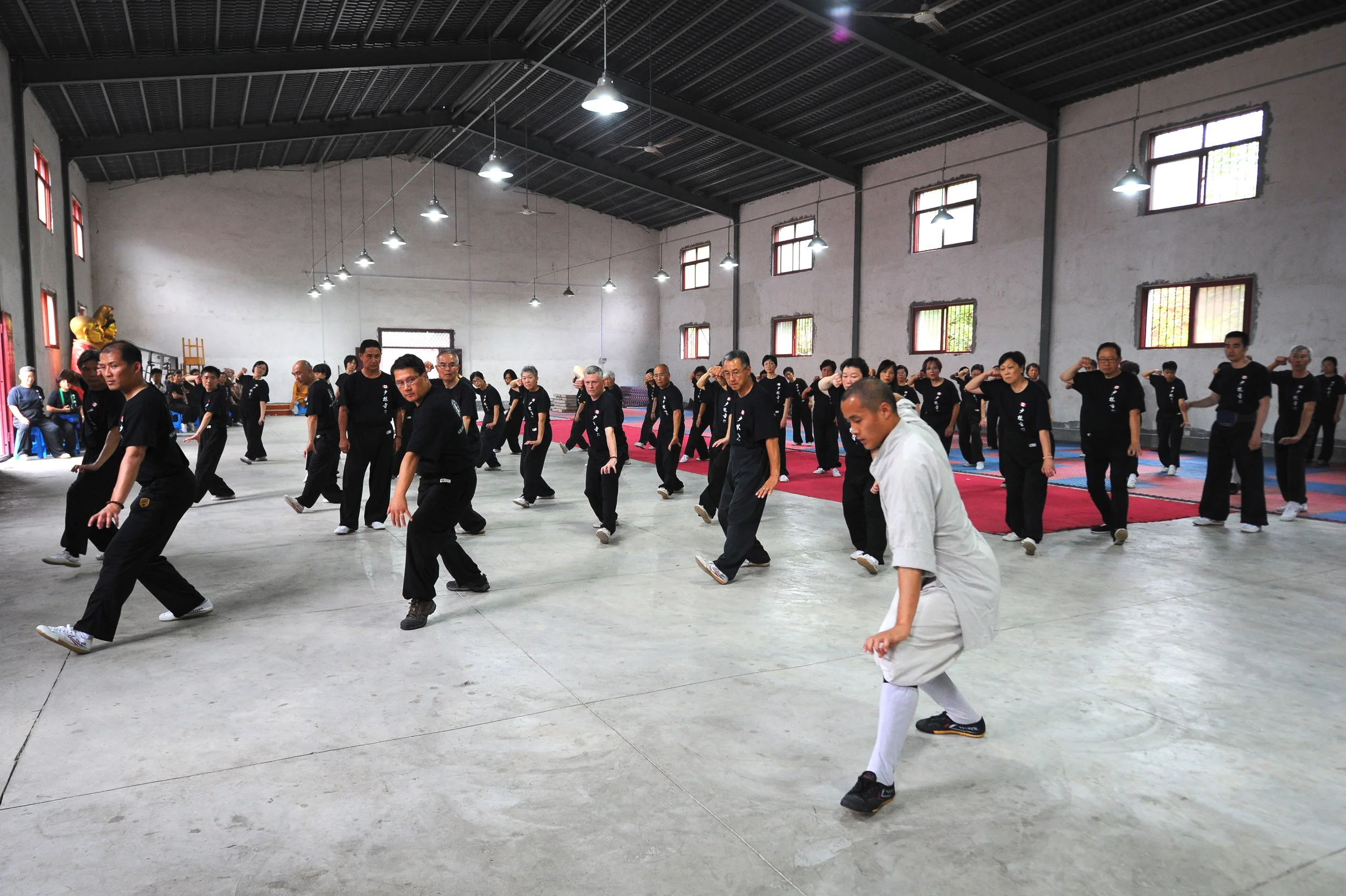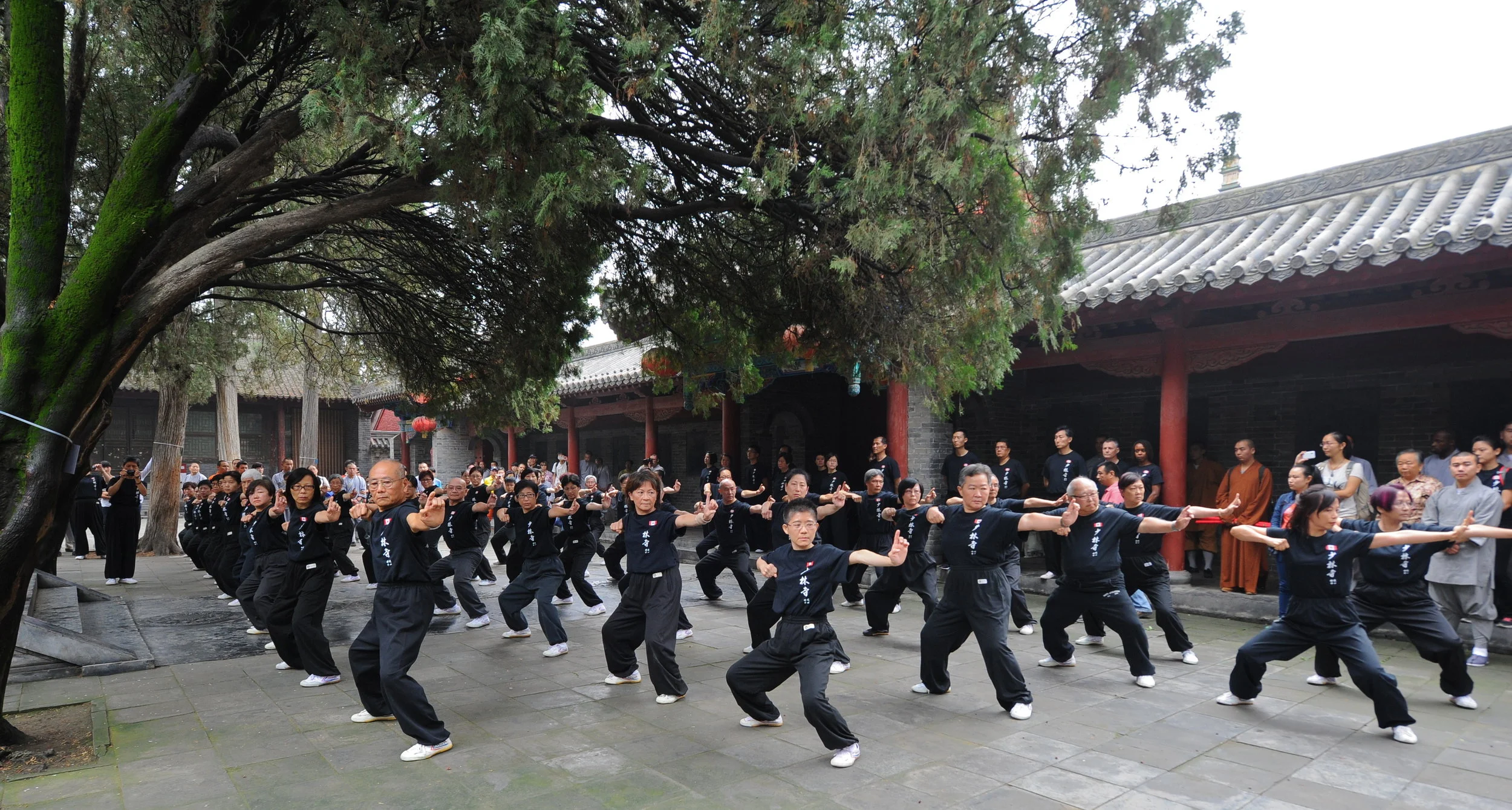






About Us
About Us
SHAOLIN CULTURAL CENTRE OF CANADA (SCCC) 加拿大少林寺文化中心
Since having been appointed by the Abbot Shi Yong Xin, the Chief Master of Song Mountain Shaolin Temple in China, the Venerable Yan Chong, Chief Coach of Shaolin Kung Fu, established the SCCC in 2007. It remains the only authentic Shaolin cultural centre in Toronto, Canada.
加拿大少林寺文化中心,是中国嵩山少林寺方丈释永信亲自授权于武僧教练延冲,代表少林寺在加拿大多伦多成立唯一一所“少林寺文化中心” 。
OUR OBJECTIVES:
The SCCC is a non-profit organization. Its main goals include gaining a better health and promoting martial arts ethics. It seeks to develop obedience and discipline; practise the Mahayana Buddhism doctrines, and propagate the spirit of compassion. The centre advocates the Shaolin's 1500 years of profound culture and Chan (Zen) Buddhism including the purification of the mind. It strives to improve the understanding amongst nations and peoples, to enhance the East and West cultural exchange and praying for a Peaceful world.
中心宗旨:
本中心是非牟利机构,以强身健体,弘扬武德,培训纪律,传承大乘佛法,推广慈悲精神,振兴中华文化及净化社会人心,宣扬1500多年的少林文化及禅宗,促进民族沟通了解,推动中西文化交流,祈愿世界和平为宗旨。
THE GOALS OF THE SCCC :
To assist Canadian Chinese with learning and understanding about their Chinese culture and heritage;
To share the world unique Shaolin Culture with all Canadian societies;
To introduce the Shaolin Wellness Health Kung Fu Program. With regular practice, the seniors and the middle aged benefit from improving their blood circulation, recovering from fatigue, cleansing and strengthening of their internal major functional organs and limbs;
To practise the Shaolin Kung Fu which helps to develop adults' and children's physical and mental well-being, adaptability and perseverance;
To learn the Shaolin monks' great compassion, the spirit of endurance, and to preach these themes to the populace.
To participate with sincerity and dedication in multi-cultural and charitable events;
To improve the relationship and respect between Canadian Chinese and other cultures, and to live a productive life in peace and in harmony;
To promote Canadian cosmopolitan culture in local and international settings and to allow more people to have a better understanding of its beliefs and characteristics;
To publicize about Canadian successes and opportunities to Chinese all over the world;
To seek opportunities for the SCCC to further contribute to our multi-cultural societies.
工作目标:辅助华人认识祖籍文化
让全加拿大公民分享世界上独特的少林文化
通过练习少林养生功,使中老年人通行血 脉,消除体内疲劳,五脏六腑及四肢污秽
通过练习少林功夫,提高成人与儿童的体质,应变能力,毅力,协调性﹔更能学习到少林寺僧人慈悲为怀,普渡众生,和吃苦耐劳的精神
积极参与多元文化推广慈善活动,奉献爱心
增加华人与其他族裔之间的了解和尊重,共享和谐与丰盛的生活
令更多国内外人士认识和了解加拿大文化特色
向世界各地华人宣扬加拿大之成就及就业机会
争取中心为社会做出更多贡献

Shifu
Shifu
ShAOLIN Yan Chong 少林延冲
Abbot Shi Yong Xin gave Cheng Min Mao the religious name Yan Chong. Since 2002, Yan Chong was made coach of the Shaolin martial arts demonstration team and toured North America, Europe, Australia and South East Asia for the team's stage presentation "Shaolin Warriors". He has visited more than thirty countries for cultural exchange in Shaolin Kung Fu and Chan Buddhism. These countries include U.S.A., Germany, Canada, New Zealand, Australia, Saudi Arabia, Korea, Japan, Malaysia, Taiwan, and Hong Kong to name a few.
1996 年进入少林寺,归依方丈释永信大和尚门下,被赐法名:延冲,成为少林寺第三十四代弟子。经过数10年苦练和师父的严加教导,现对少林传统拳法﹑气功﹑养生功等尤为精通。并在2002年担任少林寺武僧团教练,曾带团参加中国对外演出公司摄制的大型舞台剧“少林雄风” 在北美﹑欧洲﹑澳洲和东南亚地区巡回演出。为弘扬中国少林功夫曾走访过30多个国家和地区,进行文化交流与禅武教学。 2006年由中国嵩山少林寺方丈释永信亲自授权武僧延冲,代表少林寺在多伦多成立唯一的“少林寺文化中心”,为弘扬中国千年的少林禅武文化发展至今。
少林功夫已经从一个寺院的看家绝活,发展成为全球性的民俗文化。尤其在当代世界一体化的过程中,在多元文化格局背景下,少林功夫已经成为中华传统文化最通俗的表述,成为跨民族﹑跨国界﹑甚至跨信仰的文化凝聚力的重要支点,在世界上发挥着独特的文化功能。
随着国际文化交流的频繁,少林寺武僧延冲做为传播少林文化友好使者之一。使少林功夫这一灿烂瑰宝,造福与加拿大的人民。将用毕生精力向全世界推广和弘扬中国少林文化,从而促进世界和平。
延冲合十
Yan Chong was awarded first place at various Provincial competitions and served as head judge at the National Martial Arts competition. He is proficient in Shaolin martial forms of Da Hong, Xiao Hong, Lohan, Mei-hua and Pao, as well as mastery of the Shaolin cudgel staff, hooked sword and broadsword art form.
Because of the flourishing International Cultural Exchange, Shaolin Temple martial arts monk Yan Chong wants to be an ambassador so that the broad and profound Shaolin culture can be shared in Canada. He hopes that this will bring happiness, good fortune, good luck to the people of Canada and peace to the world.
He teaches Shaolin focused health exercise, Chi Kung and various other styles of Shaolin martial practice.

Zen (Chan) 禅
少林-禅
Zen (Chan) 禅
少林-禅
Bodhidarma was the 28th patriarch of Indian Buddhism. After he settled down in Shaolin Monastery, he practised meditation in concealment in a stone cave in the vicinity of the monastery for nine years. There he sank into perennial meditation until he completed his formulation of the system of Zen tenets, which is based on dhyana. Therefore he is acclaimed as the 1st patriarch of the Zen sect. The name of his successor is Huiko, reputed as the 2nd patriarch. Huiko was succeeded by Sengcan as the 3rd patriarch. Daoxin was conferred the title of the 4th patriarch after Sengcan's death. Then Hongren became the 5th patriarch, who was succeeded by Huineng as the 6th patriarch. Brilliant talents and charismatic personalities of these six paramount leaders of the Zen set combined to open out an unrestrained development of the Zen sect in China. After the 6th patriarch, five schools diverged out of the Zen sect which was at that time the largest and most powerful Buddhist sect in China.
In the parlance of the Zen sect, "Zen" means "meditation". According to Yogacara, "meditation is such a mentality, in which one makes his cogitation focus on a point by first seeking to rid his mind of all impertinent and straying thoughts." In vernacular terms, dyana (which was later transmuted into Zen of Chinese Buddhism) may be interpreted as a system of theories, which was evolved for the purpose of inducing a dhyana devotee to concentrate his mental activities on ruminating just one topic. In the case of Zen , once a Zen devotee has developed the habit of concentrating or controlling his mind at will, a new mental faculty would be created in him. To develop such a habit, a devotee may try either of the two methods of "breath-counting concentration" and "introspective concentration". Either method is intended for enabling a devotee who practices Zen tenets to control his mental activities at will. The Zen doctrine requires a Zen devotee to become not only completely blind, deaf, and benumbed to all his surroundings but also completely placid inwardly when he is in a perfect state of meditation.Therefore practising Zen entails virtually very straining mental exertion and, if such mental exertion is valid, can create a sort of mental subtlety in a Zen practitioner.
The basic doctrines adhered to by the Shaolin school of the Zen sect are completely in line with the basic doctrines formulated by Buddha himself. The policy laid down by patriarchs in the history of the Zen sect for propagating Zen basic doctrines is unique and independent. The ultimate goal expected to be reached by a devotee of the Shaolin school is his final discovery of his svabhava through the Zen transcendental meditation regularly performed by him. Besides, the Shaolin school of the Zen sect distinguishes itself from other schools of the Zen sect in its adherence to the principle of integrating doctrinal inculcation of the Zen tenets with Shaolin Kung Fu training. So far as the monk population of Shaolin Monastery is concerned, their primary task is receiving education in Zen and practising meditation. They have a secondary task to fulfill too, which is undergoing Shaolin Kung Fu training. In order to practise meditation properly a Shaolin monk needs to regulate his mind by banishing from it all thoughts so that he can have peace of mind fit for receiving Zen inculcation and practising meditation. On the other hand he has to keep himself fit so that he can carry on his primary task of pursuing Zen tenets study and practising meditation well. For that purpose he must receive Shaolin Kung Fu training. However, in no circumstances he is allowed to make progress in Kung Fu training at the cost of his achievement in Zen tenets study or meditation. Zen is the source of life, vitality, and wisdom. At the base of the universe does rest Zen.

Kung Fu 武
少林-武
Kung Fu 武
少林-武
Although there are numerous schools of traditional Chinese martial arts flourishing across China, the martial arts of the Shaolin school form a particularly important part of the cultural heritage passed down by forefathers of Shaolin Monastery. These arts - sometimes called Shaolin Kung Fu - are unique and brilliant and belong to the body of greater traditional Chinese martial arts. Because of its philosophic sophistication and technical subtlety, Shaolin Kung Fu has become a term familiar to practically every part of the world. Shaolin Kung Fu is able to engender an unusually mighty catalytic mechanism in body of a practitioner; and the mechanism functioning like a catalyst can readily bring his prowess potential and latent physical strength into full play. As time elapses, fame of the monastery has been spreading worldwide because of its seemingly supernatural attributes.
From the beginning of the Ming Dynasty onward, martial arts of the Shaolin school had been growing more and more sophisticated and more mature, which the branches of martial arts growing in number, too. So far as Shaolin repertoire of martial arts is concerned, the number of such arts has now amounted to several hundred; among them are boxing, broad sword, spear, double-edged sword, quarterstaff, qigong, jumping and soft treading, developing prowess potential, juvenile wushu, etc. In fact though these martial arts were originally developed by forefathers of Shaolin Monastery, in developing them they did try their best to draw from the strong points of martial arts developed by other wushu schools. Notwithstanding Shaolin Kung Fu has never been assimilating successful techniques of other schools at the cost of its uniqueness.
Generally speaking, Shaolin Kung Fu consists of three major categories:
(1) Boxing. Boxing includes such varieties as arhat boxing, liuhe boxing, xinyi boxing, hong boxing.
(2) Standardized Series of Movements Intended for Optimizing physique. In this category are included such varieties as "standardized series of movements intended for effecting muscular optimization", "standardized series of movements intended for fortifying bone structure".
(3) Weapon use. In this category varieties are numerous such as shaohuo Quarterstaff, meihua spear, Dharma sword, chunqiu broadsword.
Shaolin Monastery constitutes in itself a realm dominated by the spirit of "forging unity of Zen and Shaolin Kung Fu". The monk population here believes that "both Zen and Shaolin Kung Fu are two outgrowths from the same stalk", that "Shaolin Kung Fu is nothing but an incarnation of Zen", and that Zen remains the quintessence of Shaolin Kung Fu. But for the theoretical guidance provided by philosophy of Zen, there would not have been any development of Shaolin Kung Fu in the history of Chinese culture, but it had ended up in a blind alley many, many centuries earlier. Therefore without an adequate knowledge of Zen philosophy, a trainee's progress in Shaolin martial-art training can be more imaginary than real.

Zen Medicine 医
少林医
Zen Medicine 医
少林医
In more than 1500 years’ legacy of Shaolin culture since the establishment of Shaolin Temple in 495AD, Shaolin Medicine has become an intangible cultural heritage of mankind with authenticity, peculiarity and uniqueness. As one of the most outstanding representatives of excellent Chinese culture, it has strong international appeal.
Buddhist medicine is an indiscerptible part of Buddhism and enjoys an extremely high status in the history of the Eastern medicine. It is a medicine which can really treat both root causes and symptoms. Sakyamuni, also called the Great Healer, had spent nearly four years in instructing Buddhist Medical System, with the aim to relieve the sentient beings from the sufferings of illness and to make it an important tool for disseminating Buddhism. The ingenious combination of the medicine of Chinese Buddhism and folk traditional Chinese medicine makes the distinctive Buddhist Medicine of China, such as Traumatology of Shaolin Temple and Gynecology of Zhulin Temple, etc. Among them Shaolin Traumatology School is the most representative and most influential.
Shaolin Medicine originated in the Wei and Jin Dynasties (220-581), and has a history of over 1000 years. After the development in the Tang and Song Dynasties (618-1279), it finally took shape in the Ming Dynasty (1368-1644), and was enriched and improved in the Qing Dynasty (1616-1911). The Shaolin Medicine has a close relationship with the development of Shaolin Kung Fu. Most prominent Shaolin monks in history were versed in Chan, Kung Fu and Medicine, which is known to the world. For example, Tanzong and Huiyang in the Tang Dynasty (618-907), Fuju and Zhiguang in the Five Dynasties (907-960), Shiyan and Zongfa in the Yuan Dynasty, Yuekong, Zhizheng and Zhichun in the Ming Dynasty, Meiting in the Qing Dynasty. From the late Ming Dynasty, there are Chunji, Jiqin, Zhenhou, Zhenxu, Henglin, Miaoyue, Chande, etc. Their prescriptions are usually based on the theories of Chinese traditional medicine, which is an indispensable part of Chinese Traumatology.
A famous historian of the Yuan Dynasty, Yuan Haowen, wrote in his Story Shaolin Pharmacy Bureau: Shaolin Pharmacy Bureau dates back from the Jin Dynasty (1217), thus has a history of more than 800 years. The Pharmacy Bureau at that time was primarily used for treating the traumatic injuries and other diseases of Shaolin monks. Later it mainly served the local people and those who came from far away. Due to the fact that all the treatment and medicines were free, the patients would donate money after the curing of diseases. Shaolin Pharmacy Bureau has various ways to cure diseases or keep fit, such as the famous Yi Jin Xi Sui Jing and Shaolin Neigong. There are also many secret recipes handed down by eminent monks for promoting health and longevity or curing diseases. By the period of the Republic of China, Shaolin Medicine had got treatises on medicine of millions of words, and thousands of prescriptions, which are seldom transmitted to outsiders due to Buddhist precepts.
Yuan Haowen stated that the praiseworthy part of Shaolin Pharmacy Bureau is its inheritance of medical ethics more than the non-transmission to outsiders. Shaolin Chan Kung Fu and Shaolin Chan Medicine are transmitted from generation to generation without decline. By the compassionate morality and the pursuit of excellence, they finally earn the respect from the world and enable themselves to be the precious intellectual treasures of Shaolin Temple. In the past 800 years, Shaolin Pharmacy Bureau has benefited numerous people. Nevertheless, it was suspended occasionally in history because of the warfare or other reasons.
When master Fuyu served as the abbot of Shaolin Temple, he advocated the principle of “taking the traumatology department as the centre, and internal department, department of pediatrics as supplements to cure the diseases and save people”, which enables the Shaolin Pharmacy Bureau to see a flowering of creativity. In the Ming Dynasty, relatively complete medical institute and medical system were established; pharmacy department (in charge of gathering medical herbs and planting and processing of medical herbs) was set up; meanwhile, medicine school was founded to educate specialized monk doctors. In modern times, due to the declining of the nation, the affairs of the bureau were suspended for a period.
In recent years, under the leadership of Abbot Shi Yong Xin, Shaolin Temple has organized the monks and experts on Chinese medicine to conduct many organizing and mining work. After three years’ efforts, the rare edition of Secrets of Shaolin Kung Fu and Medicine finally came out which contains Shaolin secret recipes handed down from the 29th Venerable Abbot Xing Zheng to Venerable Abbot Yong Xin before the former passed away. The book now has become the permanent collection of National History Museum, National Library and Swedish king. In 2004, Shaolin Temple resumed the organizational system of Shaolin Pharmacy Bureau, since when the bureau has been providing medical services with featured Buddhist compassionate spirit for more sentient beings so as to make due contributions to the human health. It takes the inheritance of Shaolin medicine culture as its mission, the promotion of traditional medicine as its responsibility and serving the society as the purpose.
Shaolin Chan Medicine combines traditional Shaolin Medicine with modern medicine so as to better protect these treasures and benefit people. It takes “meditation” as the basic means, employs the doctrines of respiration, Daoyin, Qixue, meridians and collaterals and viscera-state as main theories, and adopts the approaches of “contemplation”, “aeration”, “massage” to diagnose, treat and nurse the patient. All of these can generate a unique health effect. The most distinctive feature of Chan Medicine is to eliminate the root cause of the delusion and find the Buddha-nature through experiencing Chan heart and cultivating pure mind.

Gallery
Gallery
Images from Shaolin Cultural Centre of Canada












































































